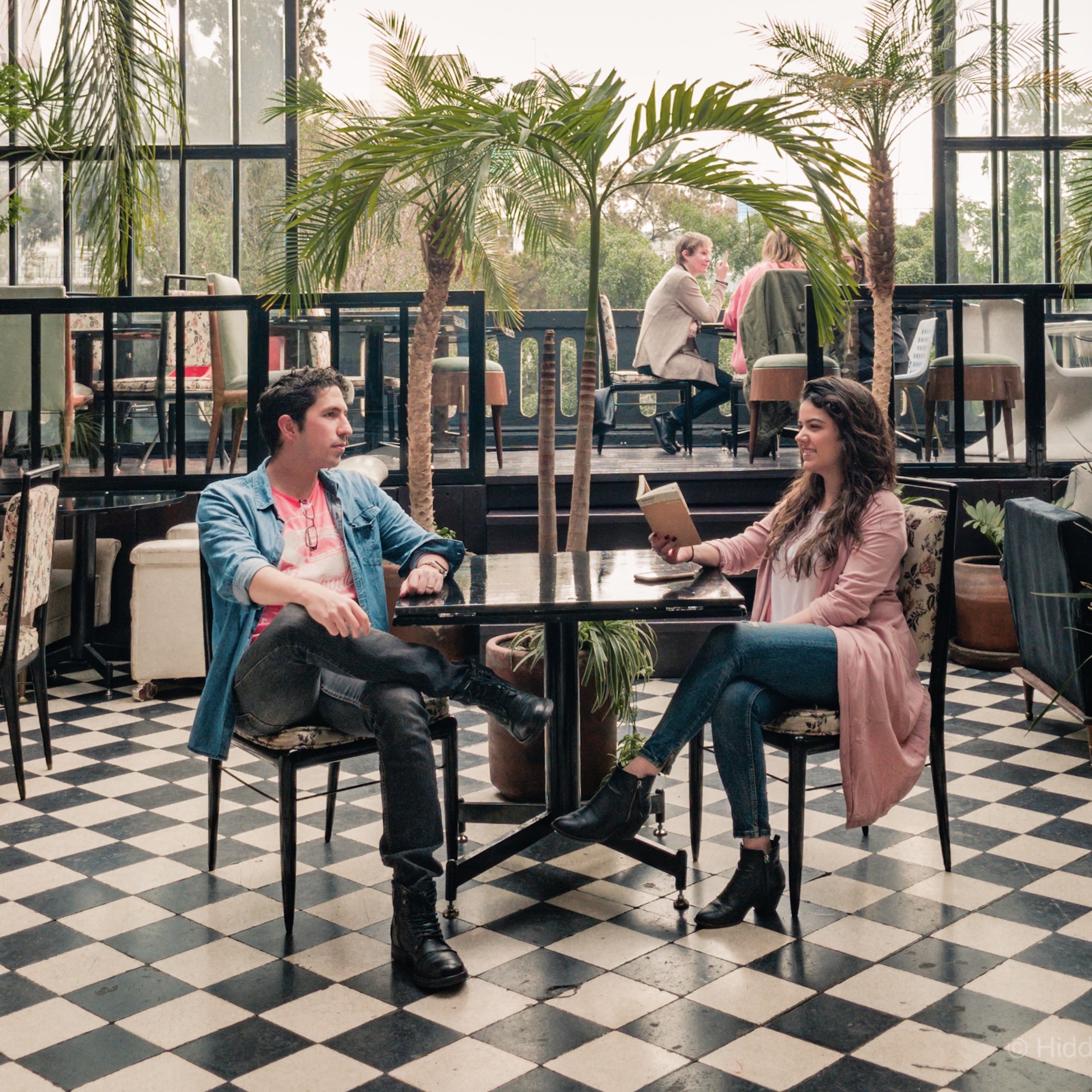
We’ve known ‘Alebrijes’ since we were little kids, because they’re originally from Mexico City, but we were curious and excited to see the town that adopted them and made them internationally famous, ultimately inspiring the splash of color and fantastical beasts of the movie ‘Coco’.

Alebrije: a colorful figure that represents an imaginary animal.
San Martin Tilcajete is a small town in the outskirts of Oaxaca City – 40 minutes drive to be exact– that has been doing wood carving for centuries. They specialized in religious statues, toys and carnival masks, until the 80’s when they took in Pedro Linares’ work and started making their own version of ‘Alebrijes’ in wood.
Pedro Linares, a famous sculptor from Mexico City (friend of Frida Kahlo and Diego Rivera), started making fantastical beasts in papier-mâché after having hallucinated them due to a high fever: he’d been in the woods surrounded by colorful fantastical beasts (donkeys with wings, roosters with horns, etc) that shouted: “Alebrijes!”. Very soon Linares became widely famous for it– as did San Martín Tilcajete, in their own way.
The town is not what one would call picturesque, but behind those beige houses and dirt roads lies an incredible hard-working colorful world…

Making an Alebrije
Entire families, grandparents and kids, work all day making Alebrijes in their own workshop or as employees in others, and this is how they do it:
First step: Carving the pieces out of a log of wood, preferably from a Copal tree, using only a saw and a set of chisels (no heavy machinery). Depending on the Alebrije this process can take days or even months.

Second step: Letting them dry under the sun, until the wood naturally cracks. Medium size pieces can take up to 6 months to dry completely, sometimes more.

Third step: Filling in the cracks and natural imperfections with small pieces of wood and then sanding the pieces until they’re super smooth. Some artisans have opted to leave some chisel marks behind to give it a more ‘raw’ (handmade) look, which actually looks beautiful.

Fourth step: Covering imperfections with a paste made out of sawdust and glue, letting the Alebrijes dry for a couple of days and then sanding them one more time.

Fifth step: Soaking the pieces in gasoline and pesticide for a day to kill any plague, letting them dry under the sun until the chemical smell disappears and then coating them with a sealant.

Tip: always ask the artisan about the meaning behind the Alebrije you’re buying. Colors and details are not there by chance.
Sixth step: Choosing the base color according to the pieces and doing five coats of it. This depends on the design they have in mind or the message they want to transmit. For example: blue for calm, green for nature, brown for earth, red for strength, etc.

Seventh and final step: Decorating each piece carefully with acrylic colors, super slim brushes and maguey thorns. The key is to mix vibrant colors and tiny details. Some may use pre-Hispanic patterns or symbols and others may tell a whole Mexican tale.



Why are they expensive?
Have you seen the process? Price is set 40% by the size of the piece and 60% by the detail that went into its decoration. If in one day (8:00 to 18:00) they only get to paint five miniature Alebrijes, you can imagine the amount of work that goes into the bigger pieces. There’s even a ‘rule’ where the painting process has to take as long as the carving did.
But don’t be discouraged. Yes, there are unique pieces that can go as high as 40,000 mxn (or even more), but there are also commercial ones made with less detail that range from $50 mxn to $1,000 mxn. Miniature ones and jewelry make great gifts.

What we loved the most about San Martín Tilcajete is that, although you may find similar pieces, each workshop has it’s own touch and creativity passed down for generations. Some have focused more on making jewelry or have specialized in truly unique (and thus expensive) pieces, while others have combined techniques and made incredible homeware. Below are some of the workshops we visited.
Oh, by the way, artisans say that we don’t pick the Alebrije, the Alebrije picks us…

Useful information
Workshops we visited
- Zeny Fuentes & Reyna
Carretera Oaxaca Puerto Ángel Km 23.5, San Martín Tilcajete
- Manos creativas
R.Tamayo s/n, esq. F. Toledo, San Martín Tilcajete
- Estudio de Arte Luz de Luna
Av. Zaragoza #10, San Martín Tilcajete
- Artesanías Xóchitl Fuentes
Calle 8 de octubre s/n (white house), San Martín Tilcajete
- Colores de mi Tierra
Calle del tanque #8, San Martín Tilcajete
- Galería Pedacitos de mi Tierra
Av. Juárez #s/n, esq. Av. Oriente, San Martín Tilcajete
- Ángel Piña (speaks English)
Privada de Oriente #1, San Martín Tilcajete
Map
We’ve pinpointed all the workshops mentioned above on to this map, to save you some time!


Wonderful work..
Author
It really is! Thanks for reading, Cynthia!
Oh wow! I love these colours and creatures!!
It is so great to learn about the process. Thank you for this informative article. Very good written and nice pictures.
I hope I will be picked by some beautiful Alebrijes in Oaxaca.
Author
So happy you liked it! It’s exquisite craftsmanship, indeed. Thank you for reading, Rita! xo
Thank you for explaining the process. I visited San Martin 10 years ago and was fascinated with the pieces all the family members made. We kept their card, and 10 years later, we looked for the place again. The family members were surprised we looked them up after all these years. “Colores de mi Tierra” has grown to international fame and offers incredibly beautiful pieces, which of course we bought and brought back.